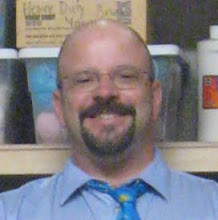
Third graders started this week by making pinch pots. That was the easy part. Next we took it to the next level! We made the pinch pots larger by using the coil method. That's when you make little snakes out of clay, and coil them around the top of the pot until it is the height you want. You can also use the coils to make handles, decorations, etc.
It's easy to remember the name of this technique, because you use little snakes of clay and coiling is what a snake does when he's about to strike.

But you have to score the coils with a plastic fork and wet them. When working with clay, remember this simple rule,
It's easy to remember the name of this technique, because you use little snakes of clay and coiling is what a snake does when he's about to strike.

But you have to score the coils with a plastic fork and wet them. When working with clay, remember this simple rule,































